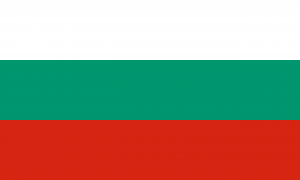Difference between revisions of "Language/Bulgarian/Grammar/Plurals"
m (Quick edit) |
m (Quick edit) |
||
| Line 39: | Line 39: | ||
<br><hr>If you have any questions, please ask them in the comments section below.<br>Feel free to edit this wiki page if you think it can be improved. 😎 | <br><hr>If you have any questions, please ask them in the comments section below.<br>Feel free to edit this wiki page if you think it can be improved. 😎 | ||
==Related Lessons== | |||
* [[Language/Bulgarian/Grammar/PRESENT-SIMPLE-TENSE-–-Сегашно-време|PRESENT SIMPLE TENSE – Сегашно време]] | |||
* [[Language/Bulgarian/Grammar/GENDER-OF-NOUNS-–-Род-на-съществителните|GENDER OF NOUNS – Род на съществителните]] | |||
* [[Language/Bulgarian/Grammar/NUMBER-OF-NOUNS-–-Число-на-съществителните|NUMBER OF NOUNS – Число на съществителните]] | |||
* [[Language/Bulgarian/Grammar/DEFINITE-ARTICLE-OF-NOUNS-–-Членуване-на-съществителните|DEFINITE ARTICLE OF NOUNS – Членуване на съществителните]] | |||
* [[Language/Bulgarian/Grammar/Comparatives-and-Superlatives|Comparatives and Superlatives]] | |||
* [[Language/Bulgarian/Grammar/GENERALIZING-PRONOUNS-–-Обобщителни-местоимения|GENERALIZING PRONOUNS – Обобщителни местоимения]] | |||
* [[Language/Bulgarian/Grammar/Questions|Questions]] | |||
* [[Language/Bulgarian/Grammar/Personal-Pronouns|Personal Pronouns]] | |||
* [[Language/Bulgarian/Grammar/Nouns|Nouns]] | |||
* [[Language/Bulgarian/Grammar/Types-of-Questions-–-Видове-въпроси|Types of Questions – Видове въпроси]] | |||
{{Bulgarian-Page-Bottom}} | {{Bulgarian-Page-Bottom}} | ||
Revision as of 22:54, 25 February 2023
Welcome to the Bulgarian Grammar lesson on Plurals! In this lesson, you will learn how to form plurals in Bulgarian. This is an important part of the language and it is essential to understand it if you want to communicate effectively in Bulgarian.
Overview
In Bulgarian, there are two types of plurals: regular and irregular. Regular plurals are formed by adding a suffix to the singular form of the word, while irregular plurals are formed by changing the stem of the word.
Regular Plurals
Regular plurals are formed by adding a suffix to the singular form of the word. The suffixes used depend on the gender of the noun.
Masculine Nouns
For masculine nouns, the suffix -и is added to the singular form of the word. For example, the plural of дом (house) is домове (houses).
Feminine Nouns
For feminine nouns, the suffix -и is added to the singular form of the word. For example, the plural of книга (book) is книги (books).
Neuter Nouns
For neuter nouns, the suffix -а is added to the singular form of the word. For example, the plural of плод (fruit) is плодове (fruits).
Irregular Plurals
Irregular plurals are formed by changing the stem of the word. For example, the plural of дявол (devil) is дяволи (devils).
Conclusion
In this lesson, you have learned how to form plurals in Bulgarian. You now know that there are two types of plurals: regular and irregular. Regular plurals are formed by adding a suffix to the singular form of the word, while irregular plurals are formed by changing the stem of the word.
If you want to learn more about Bulgarian grammar, why not join the Polyglot Club community Polyglot Club? There, you can find other learners who are also interested in learning Bulgarian and you can exchange tips and advice.
If you have any questions, please ask them in the comments section below.
Feel free to edit this wiki page if you think it can be improved. 😎
Related Lessons
- PRESENT SIMPLE TENSE – Сегашно време
- GENDER OF NOUNS – Род на съществителните
- NUMBER OF NOUNS – Число на съществителните
- DEFINITE ARTICLE OF NOUNS – Членуване на съществителните
- Comparatives and Superlatives
- GENERALIZING PRONOUNS – Обобщителни местоимения
- Questions
- Personal Pronouns
- Nouns
- Types of Questions – Видове въпроси
